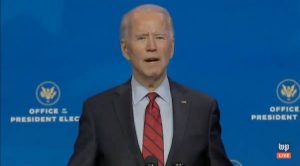California has
more homeless people than any other state, with large homeless
tent camps occupying the sidewalks of many of its streets.
California also has the
second most expensive housing of all states, lagging only
behind Hawaii.
Writing at the Washington Examiner, Timothy P. Carney
wonders to what extent the state government’s regulatory
environment is contributing to both problems.
Land-use regulations
make housing more expensive. The Los Angeles metro area ranks
as the 15th most restrictive in land-use regulation.People who own houses in housing-restricted places often don’t
want to deregulate. They like the space. They fear the traffic. And
they know that adding more housing could harm their home values. Of
course, preserving scarcity in housing to keep your housing
investments valuable is not really something most people want to
admit to, so they make other arguments.They suggest that the regulations drive up home values not by
curbing supply but by giving people what they want: green
buildings, safe buildings, adequate parking, and uncrowded
neighborhoods.But the one study that has looked into this finds that more than
90% of the price effect of regulation comes not from making the
homes more desirable but from
limiting supply. So regulation is affecting the market mostly
by preventing homes from being built.
That finding raises a question. How many regulations has
California put in the way of building homes?
According to QuantGov, last year the state
government of California imposed on businesses and residents a
total of
395,503 restrictions, as defined by the
number of times that words like “must”, “shall”,
“required”, “prohibited”, and “may not” appear within
the online version of the California Code of Regulations (CCR).
Not only is that number more than any other state, it is nearly
88,000 more than the number of similar government-mandated
restrictions imposed by New York’s government agencies, the state
that ranks second in this measure.
Within the CCR, California’s Building Standards Code (Title
24) contains more restrictions than any other section, totaling no
fewer than 75,712 restrictions. At the same time, the section for
Housing and Community Development (Title 25) contains 12,204
restrictions, the tenth largest of all sections (or titles)
contained in the CCR.
Combined to total 88,186 regulatory restrictions, these two
sections that effectively dictate what housing may be built in
California account for over 22 percent of the total regulatory
burden set by all the state’s government agencies.
How does that compare with New York? QuantGov’s
2017 report for New York suggests the Empire State imposes far
less of a regulatory burden on homebuilders, but since the
state’s building code contains fewer than 12,474 restrictions, it
doesn’t even make the list of the Top 10 contributors to that
state’s regulatory burden.
It occurred to me that California’s building code might be
more restrictive than a state like New York because much of the
state is prone to natural disasters like earthquakes, mudslides and
wildfires. So I looked at my former home state of Washington, which
is prone to similar disasters. Its building code does make the top
ten in QuantGov’s
list of the state’s biggest contributors of restrictive
regulations for 2019, where the state’s Building Code Council
(Title 51) ranks ninth by accounting for a total of 4,585
restrictions.
California has over 19 times that number of restrictions
limiting what housing and other structures may be built within the
state. Those regulations haven’t come about by accident—they
are the result of years of effort on the part of California
politicians and regulators.
If you remember the sky-high oil and fuel prices of a decade
ago, the political slogan of many seeking to bring the runaway
prices of that day was “Drill, Baby, Drill.”
These advocates recognized that increasing the supply of oil was
the only effective path to bring oil and gas prices back down to
more affordable levels, so they worked to remove regulatory
barriers to producing more supply. It may sound corny, but it worked.
If California’s politicians and bureaucrats ever want to get
serious about building a larger supply of affordable housing, they
need to start demolishing the artificially restrictive environment
they have built and that has produced the opposite outcome they
claim they want. The right slogan for California to improve the
lives of the state’s neediest residents is “Build, Baby,
Build.”
This article has been reprinted with permission from the
Independent Institute.
Sourced from
FEE.org
Image:
Wikimedia
Subscribe to Activist Post for truth, peace,
and freedom news. Send resources to the front lines of peace and
freedom HERE!
Follow us on SoMee,
HIVE, Parler, Flote, Minds, MeWe, Twitter and Gab.
Provide, Protect and Profit from what’s coming!
Get a free issue of Counter
Markets today.






